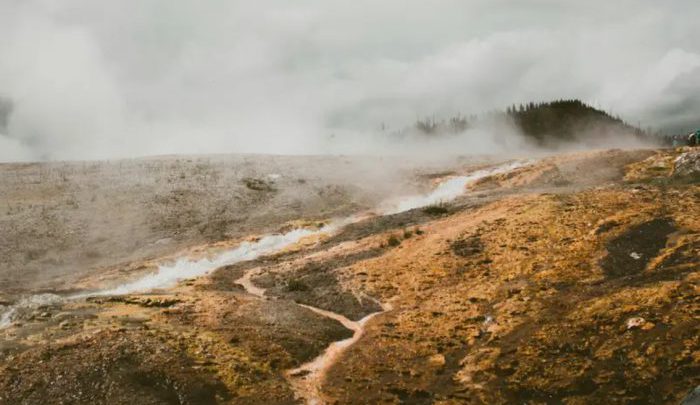New electromagnetic imaging has uncovered four massive magma chambers under Yellowstone, including one rivaling a past mega-eruption that reshaped the park.
A groundbreaking underground map of the Yellowstone supervolcano has unveiled startling details about the magma system lurking beneath one of Earth’s most closely watched natural hazards.
Scientists from the USGS, Oregon State University, and the University of Wisconsin-Madison used a technique called magnetotellurics—tracking how rocks conduct electricity in response to lightning and solar storms—to peer deep into Yellowstone’s subsurface. Their findings? Four distinct magma reservoirs, located between 4 and 11 kilometers below the caldera, all filled with volatile rhyolitic magma.
One reservoir is especially alarming: it contains nearly the same volume of magma as the Mesa Falls eruption 1.3 million years ago, which devastated the region and permanently altered Yellowstone’s landscape.
Researchers have now shifted attention to the northeastern caldera, where they discovered a troubling link between shallow rhyolitic magma and deeper basaltic magma. Basaltic magma releases intense heat, capable of melting surrounding rock and connecting magma chambers — raising the possibility of much larger reservoirs forming over time.
The western caldera, by contrast, is cooling and solidifying, lowering its eruption risk. Still, volcanologists warn that Yellowstone’s system is dynamic. “Things can change in decades, not just millennia,” cautioned Larry Mastin of the USGS.
🌋 What If Yellowstone Erupts Again?
Yellowstone has experienced three colossal eruptions in the past 2.1 million years. A future eruption, though not considered imminent, could devastate North America and impact global climate:
- A VEI 8 super-eruption would eject ash plumes into the stratosphere within minutes.
- A 100-km radius would face immediate catastrophic fallout.
- Chicago, San Francisco, and even eastern Canada could be blanketed in heavy ash.
- Vast sulfur dioxide emissions would cool Earth by blocking sunlight, potentially causing a 15–20 year climate disruption with disastrous effects on agriculture, ecosystems, and global weather.
While scientists stress no eruption is on the horizon, the new mapping underscores why Yellowstone remains one of the most closely monitored volcanoes in the world.





